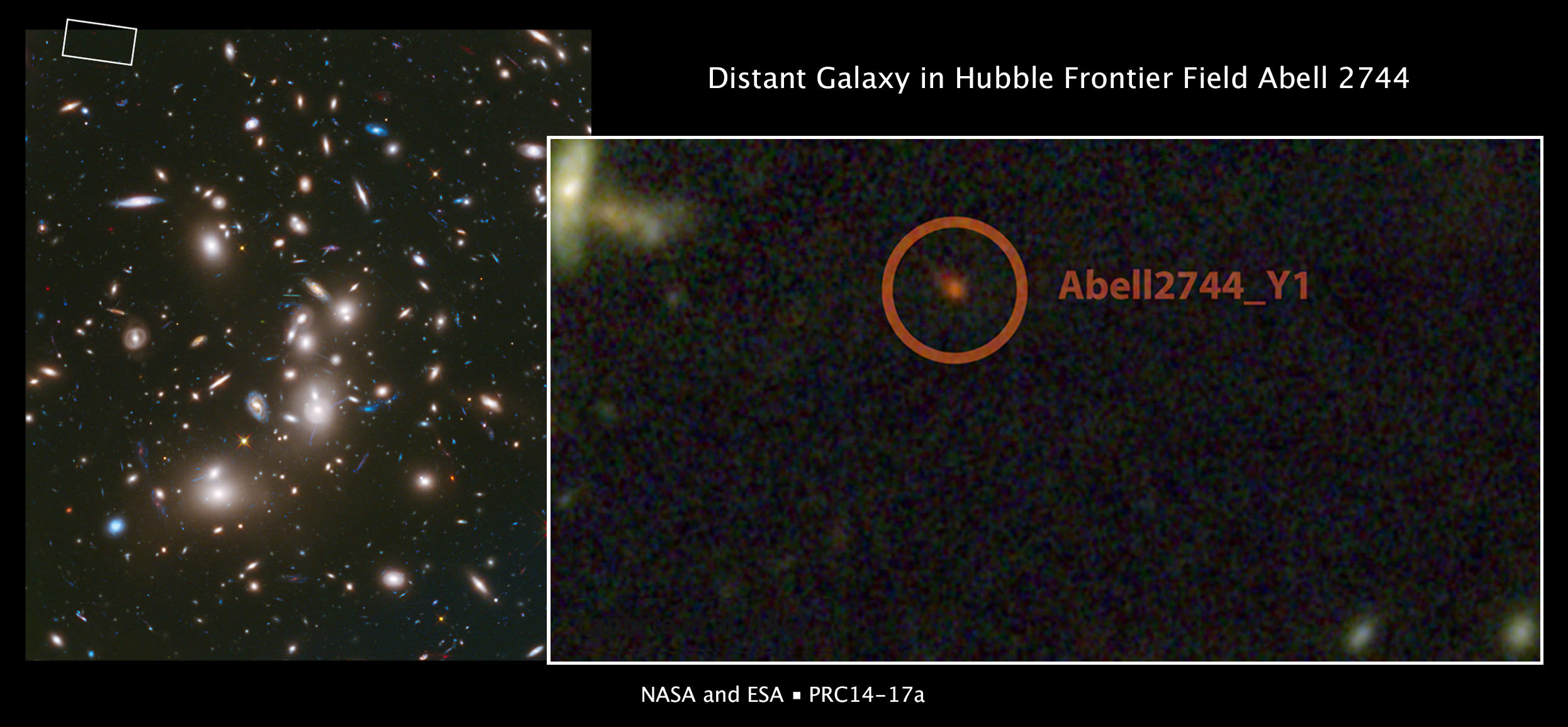Peering deep into the universe with the Hubble Space Telescope, a team of researchers have found an extremely distant galaxy. It was discovered in Abell 2744, a galaxy cluster. The galaxy (called Abell2744_Y1) was spotted at a time when it was just 650 million years after the universe-forming Big Bang (which makes it more than 13 billion years old).
This demonstrates the potential of a relatively new project, researchers said, called “Hubble Frontier Fields.” It’s part of an effort where Hubble and fellow NASA space telescopes Spitzer and the Chandra X-ray Observatory will examine six galaxy clusters that bend the light from more distant objects in the background. By doing this, researchers hope to learn more about galaxies formed in the universe’s first billion years.
“We expected to find very distant galaxies close to the cluster core, where the light amplification is maximum. However, this galaxy is very close to the edge of the Hubble image where the light is not strongly amplified,” stated Nicolas Laporte, a post-doctoral researcher at the Institute of Astrophysics of the Canary Islands (Instituto de Astrofisica de Canarias) who led the study.
“We are really lucky that we could find it in the small field of view of Hubble. In a related study led by Hakim Atek … more galaxies are analyzed but none is more distant than Abell2744_Y1.”
You can read the study in the journal Astronomy and Astrophysics Letters or in preprint version on Arxiv.
Source: Space Telescope Science Institute and Institute of Astrophysics of the Canary Islands


Fantastic! Halton Arp turning in his grave … Now he’s gone, but I can not help but notice that the “young red galaxy Abell2744_Y1” looks a lot like a QSO almost perfectly aligned with the jet of matter that comes out of the active older and closer galaxy nucleus, you see in the upper left corner of the small pane.
Another coincidence? Of course …
Arp would have a difficult time reconciling the observed spectral energy distribution(SED) of this z~8 galaxy with the SED of a similar galaxy at the same redshift as Abell 2744 (z=0.308). Additionally a recently discovered galaxy with a *spectroscopic* redshift of z=7.5 has a SED almost identical to this z~8 galaxy(strong evidence in favor of the photometric redshift estimate). A z~8 galaxy with the SED of this object residing at the distance of Abell 2744 would be unique in the annals of astronomy. A one-of-a-kind object.
Not only that, the SEDs of the 14 z~6-7 galaxies seen behind Abell 2744 don’t resemble the SEDs of any galaxies at z=0.3. So multiple one-of-a-kind objects in this galaxy cluster. How would Arp spin that?
A second paper detailing Spitzer IR observations of this z~8 galaxy can be found under arXiv 1401.8263
In any case Arp would have had great difficulty, having been expelled by the scientific community, deprived of the opportunity to do research, to check the results and to publish his research.
I can not tell if he was right or wrong, but some of the attitudes of the scientific community leave me … baffled.
However, in my opinion, galaxy or QSO Abell2744 is almost perfectly aligned with a jet of material coming out from a “nearby” galaxy, and this is consistent with the observation research that has constantly characterized the scientific life of Arp.
Regards and thanks for your kind reply.